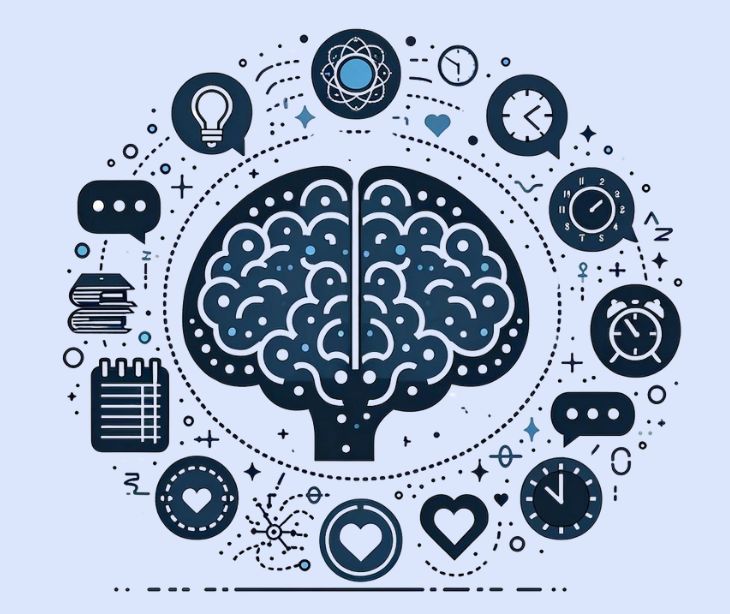2 min read
How text messages can improve cognitive-behavioral therapy (CBT) in individuals with depression
Caitlin Anthoney March 20, 2024

Text messaging can be used to provide support to individuals with depression by incorporating techniques like cognitive-behavioral therapy (CBT) while maintaining patient privacy.
Cognitive-behavioral therapy (CBT) in depression treatment
Research shows that cognitive-behavioral therapy is the "first choice of treatment for depressive symptoms and disorders."
CBT considers an individual's experiences to be based on thoughts, feelings, and behaviors. People living with depression often have negative thoughts that amplify their feelings of hopelessness. These thoughts then often lead to unhealthy behaviors.
CBT helps individuals identify and challenge those negative thoughts. Therapists assist patients in recognizing the cognitive biases fueling their depressive symptoms. The therapist will then help the patient challenge the accuracy of those biases, promoting a shift toward more realistic viewpoints.
Additionally, CBT gives patients practical tools to change their unhealthy behaviors using problem-solving strategies and relaxation methods and encourages participation in fun activities.
While CBT helps manage depression, integrating text messages can enhance its efficacy by keeping individuals "more engaged in the intervention."
How text messages can facilitate CBT
HIPAA compliant text messaging addresses the demand for more accessible mental healthcare services. These texts can be used in combination with CBT to remind patients to do their psychotherapy homework, offer motivational messages, or provide useful tips on how to better manage their depression.
BMC Psychiatry states that "…supportive text messaging is a feasible and effective add-on intervention to improve treatment outcomes in depressed patients."
It further explains that patients generally respond well to text message interventions. Therapists can send frequent HIPAA compliant text messages to check in on a patient's mood.
Incorporating CBT in those texts allows patients to self-monitor their daily emotional experiences, with patients stating that it helps them "monitor and reflect on mood trends."
Personalized text messaging in treating depression
Studies show that sending "personalized [texts] enhance patient engagement." This often results in better health outcomes compared to automated messages, which are often perceived as impersonal by patients. So, to increase patient engagement, providers can tailor psychotherapeutic content in their text messages to fit individual needs. These personalized text messages create a more supportive and relatable therapeutic environment.
Read also: Improve patient engagement with HIPAA compliant text messages
HIPAA compliant personalization in text messaging
Providers can securely send texts incorporating CBT techniques to support individuals managing depression while safeguarding protected health information (PHI). Through encryption and secure messaging platforms like Paubox Texting, providers can ensure the confidentiality of a patient's PHI.
This helps patients access personalized CBT exercises, mood-tracking prompts, and therapeutic reminders while ensuring the confidentiality of their PHI. Additionally, providers are more likely to receive patient feedback, allowing for real-time treatment adjustments.
Incorporating patient feedback
Patient feedback helps providers promptly address challenges the patients encounter, which could lead to better treatment plan adherence. It gives patients the opportunity to express their preferences and ensures that the messages remain relevant.
For example, a patient receiving CBT text messages for depression treatment could find it challenging to engage with the content because the timing of the messages conflicts with their work schedule. Their feedback can then be used to adjust the timing of the messages to better suit their needs. This could lead to better patient engagement and improved adherence to the treatment plan.
FAQs
What are the future directions for using text messages in treating depression?
Future research could potentially look at text message language, particularly when combined with other sources of data, to predict depression status and passively monitor changes in depressive symptom severity. This could potentially lead to more accurate and timely detection of depressive symptoms.
Can text message interventions benefit underserved populations undergoing CBT for depression?
Yes, patients facing socioeconomic disparities or geographical barriers may struggle to access mental health services. However, HIPAA compliant text messaging can provide accessible and convenient support tailored to their needs. Text message interventions bridge the gap, offering vital support regardless of geographic location.
Subscribe to Paubox Weekly
Every Friday we'll bring you the most important news from Paubox. Our aim is to make you smarter, faster.




